The island nation of Japan is usually not on the top of the list when it comes to dinosaur discoveries, but in the last few years, that quickly changed as more dinosaur fossils are found especially those from the Cretaceous.One of the most recent and exciting discovery from the Land of The Rising Suns is a nearly complete hadrosaur skeleton, Kamuysaurus japonicus.
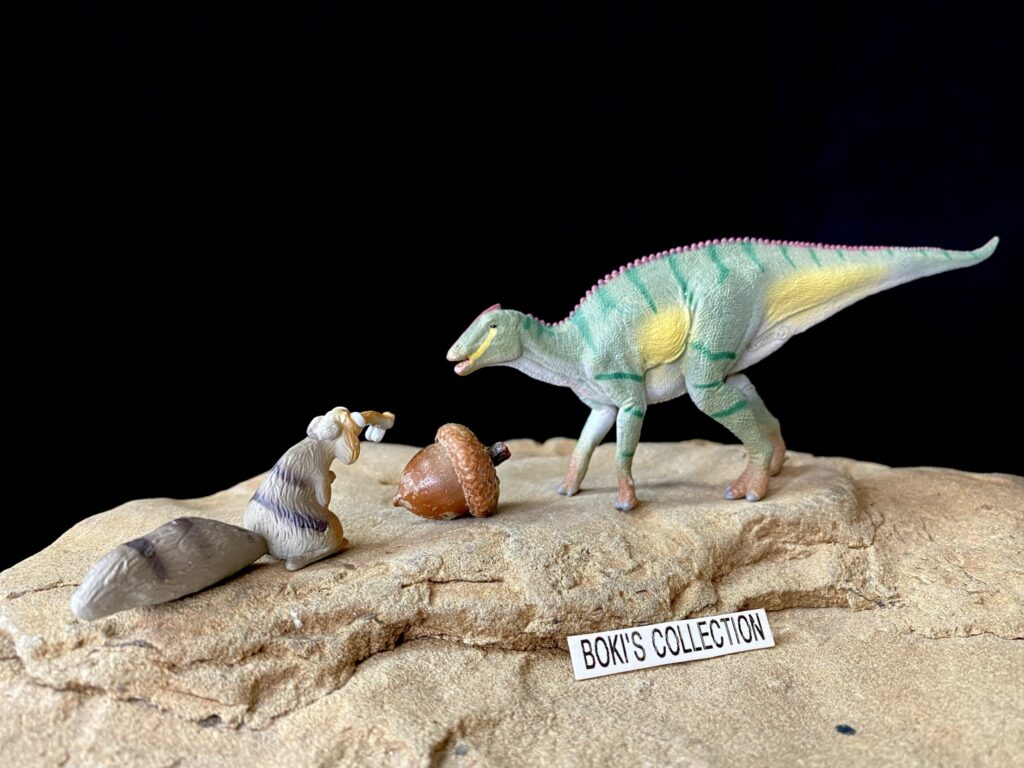
Kamuysaurus was first discovered in 2003 by amateur paleontologist in the town of Mukawa in the island of Hokkaido. It was only the tail that was first discovered but enough to identify it as some type of herbivorous dinosaur, more likely some type of ornithopod. A decade later in 2013 and 2014 an almost complete skeleton was discovered and recovered and was given the nickname Mukawary (the Dragon of Mukawa). It would be another five years, in 2019, before it would be formally described and given the official name Kamuysaurus japonicus.
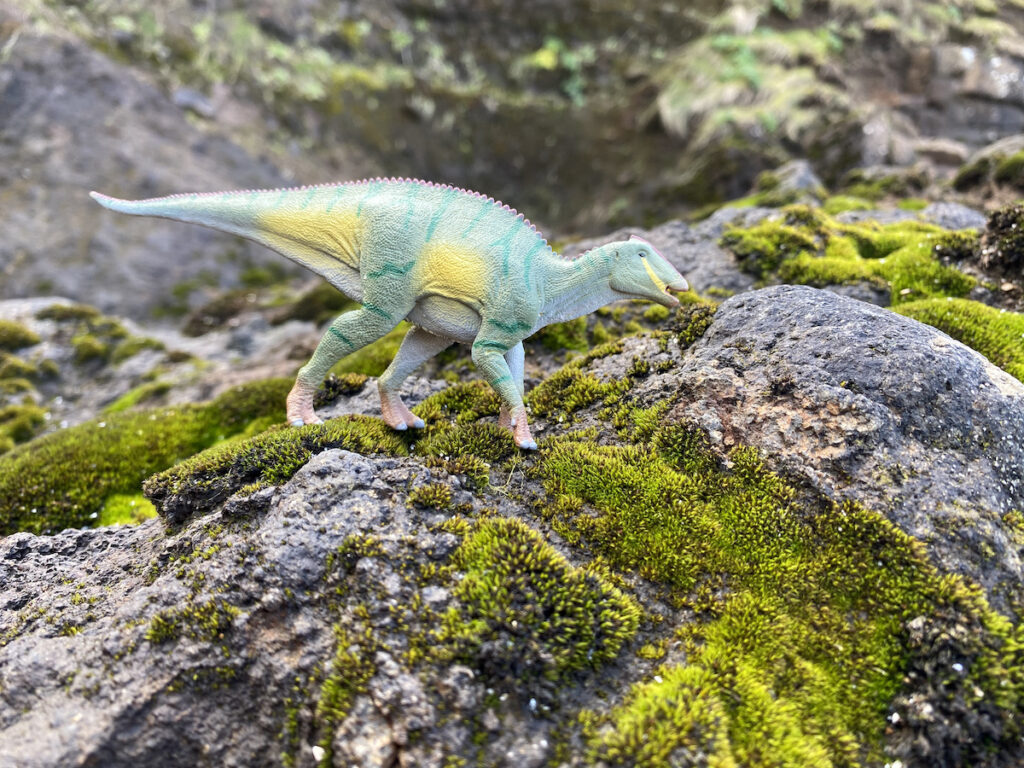
In the last few years, CollectA has given us one ornithopod after another starting with the iconic Iguanodon and the smaller Mantellisaurus, then followed by Fukuisaurus (another Japanese dinosaur).This year, CollectA is at it again with a beautiful figure of this recently discovered dinosaur. It is part of their standard size figure and continues their spotlighting Dinosaurs from Asia.
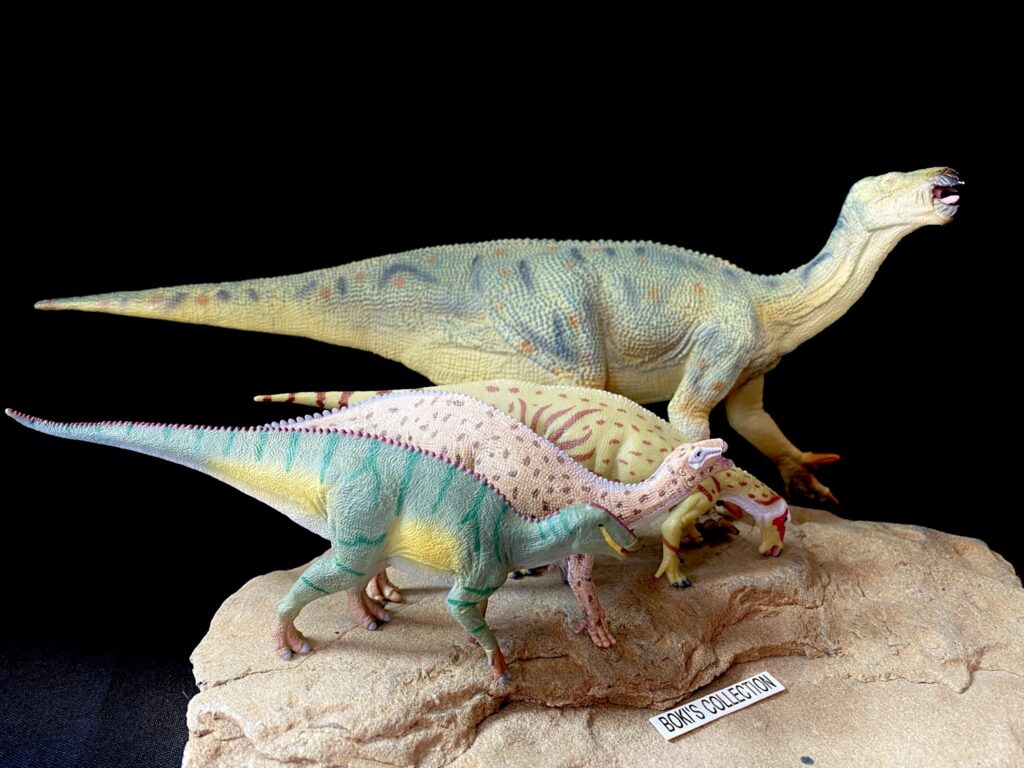
Kamuysarus is a genus of edmontosaurin saurolophine hadrosaur from the Late Cretaceous Maastrichtian deposit. The fossil was found in marine deposit, most likely the carcass was washed to sea after the animal died. It lived around the same time as famous dinosaurs such as Tyrannosaurus and Triceratops but all the way on the other side of the globe.

The skeleton is 60% complete and includes a nearly complete skull, only missing the snout. It joins the much smaller Fukuivenator as being the most complete dinosaur skeleton ever found in Japan. This gives scientist a pretty good idea of how the animal may have look like as well as its size. Scientist have estimated that the animal was an adult individual of roughly nine years of age, measuring 26 feet long.

The figure measure 5.5″ inches long and 2.5″ inches tall, it is almost the same size as its two predecessors Mantillisaurus and Fukuisaurus.It’s great to see another Japanese dinosaur whose name doesn’t start with the word “Fukui”after Fukuisaurus, Fukuivenator, and Fukuiraptor! It just so happens that CollectA also produced figures of both Fukuisaurus and Fukuivenator in 2020, so this model joins them as representative of dinosaur from Japan.
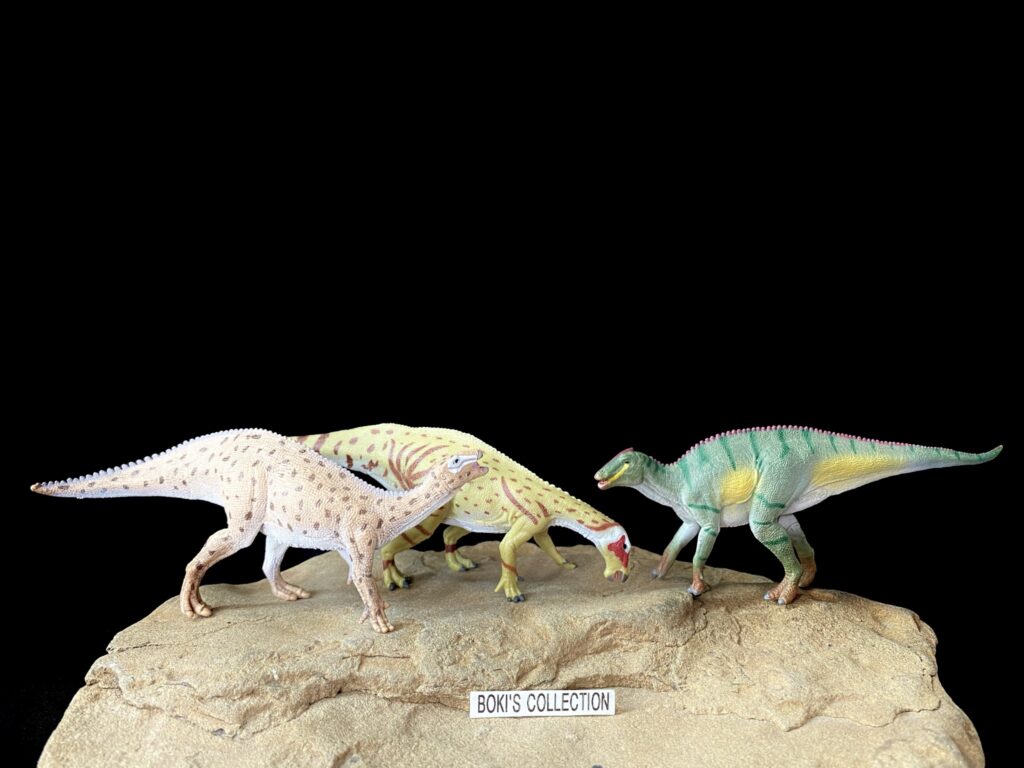
Like its predecessors, this figure, too, is beautifully sculpted with lots of delicate and subtle details, and it also shares the dainty appearance of the two earlier figures.The figure is sculpted in a quadruped pose, but like many hadrosaurs, it probably could also stand on its hind legs in a biped stance.
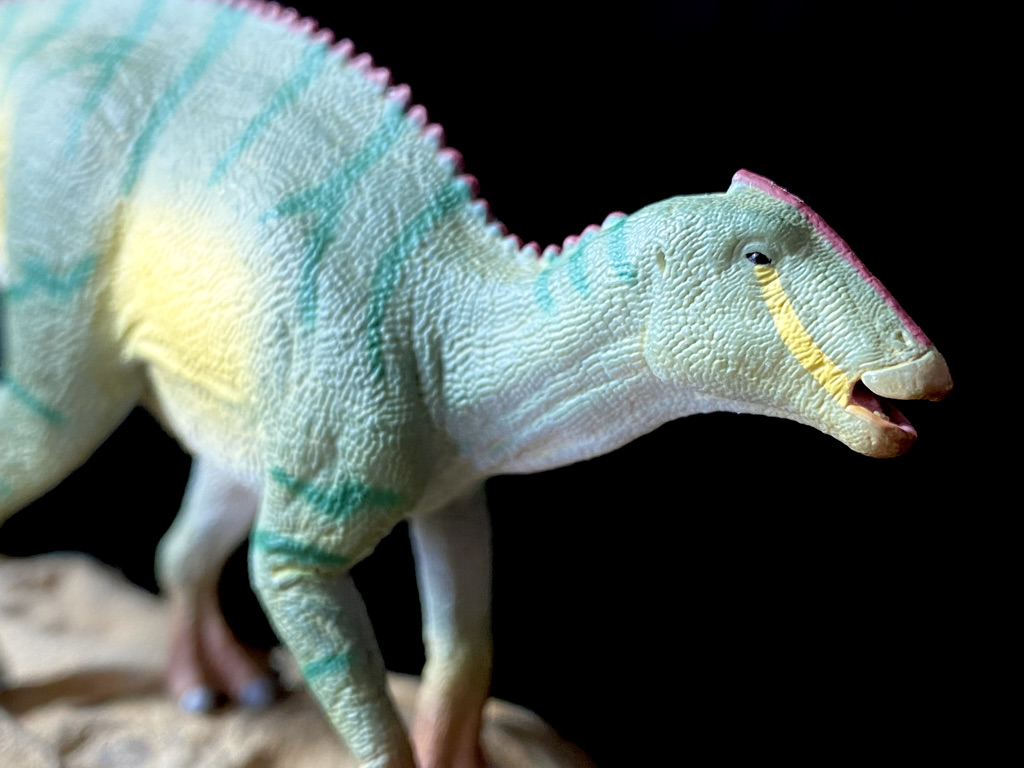
The crest on top of the skull is small and points back, similar to that of Saurolophus but much smaller. The figure captures this small crest beautifully and is given a reddish color that contrast with the green and yellows. The head is sculpted very delicately and makes it look dainty. The mouth is open, and you can see the famous duckbill beautifully sculpted with lots of little lines and is given a reddish-brown color.

The nose is situated just above the bill or snout and is surrounded by skin wrinkles and delicate scales. There is a clear and good muscle definition on the head and cheeks that suggest strong muscles attachments. The eyes are small and encircled by wrinkles that radiates outwards like rings. It is painted black which works well for its small size. You can also see the ears right behind the base of the skull. The head is adorned by delicate small scales of various size.
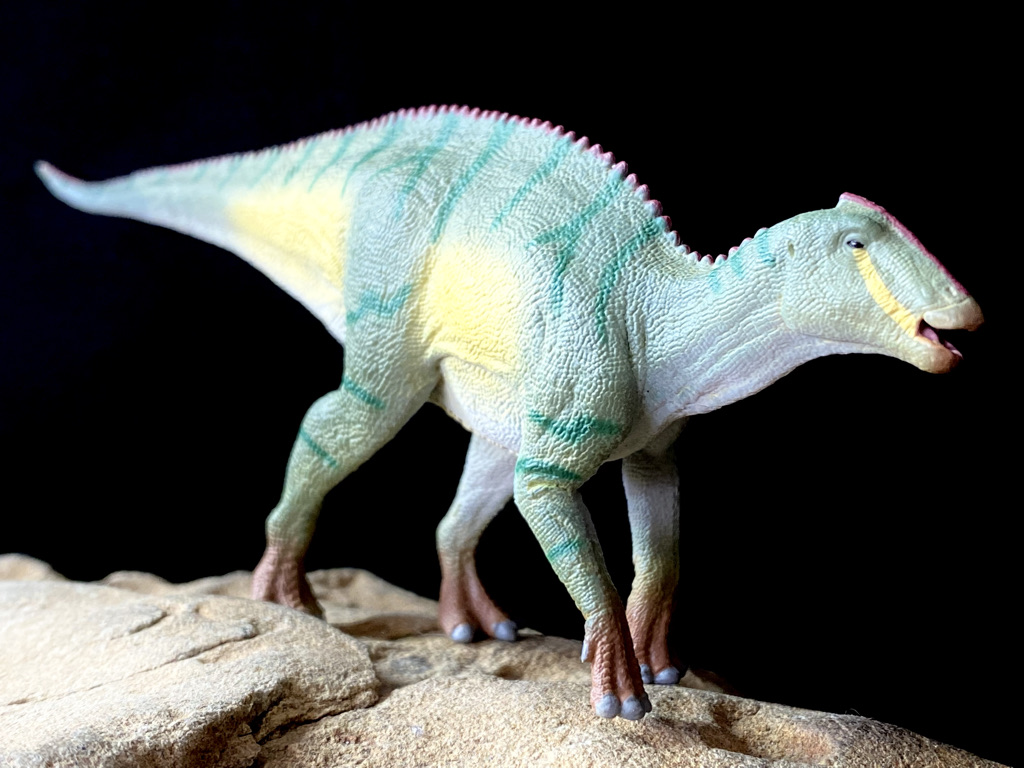
The neck is short but muscular and pulled back and there is loose skin on the throat area just below the muscles. On the ridge of the back are spines that run the entire length growing smaller as it reaches the tip of the tail. The body is robust and deep with lots of muscle definitions.The scales are done delicately and are small and vary in size depending on location on the body. Skin folds, especially on the belly/stomach region abound and add a sense of movement.
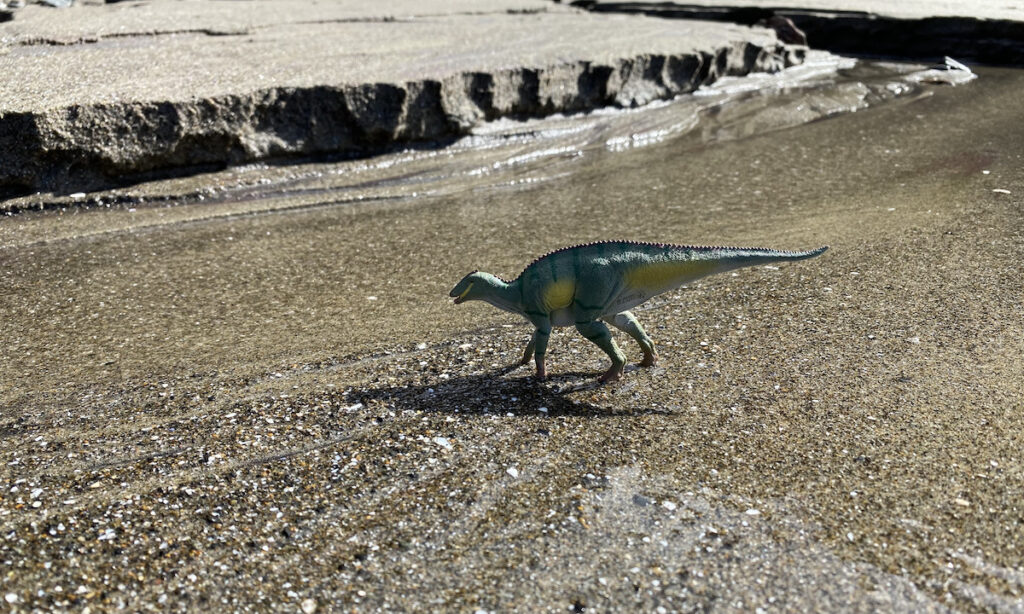
The feet are planted on the ground in a quadruped pose with the much shorter front slightly bent in a semi-walking position. The front legs are short than the back as most hadrosaurs and slender built, this gives the figure the figure a “dip” towards the front and raises the tail slightly.The front feet have the correct number of toes and shows the hoof-like structure and you can see the small back digit sculpted delicately higher up.
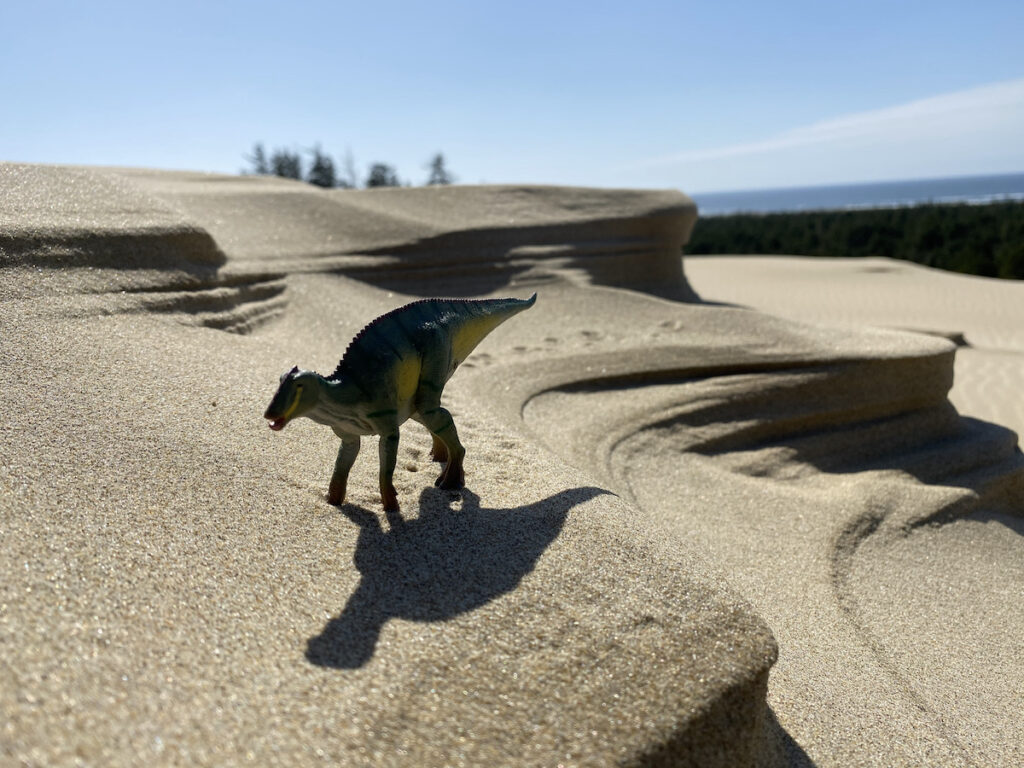
As you move to the back legs, they are more robust and muscular as they should be since this is where the majority of the animal’s weight is concentrated especially if it rears in a biped stance.These powerful legs attach to the hips which are also robust as it also supports the huge tail muscles. The back toes are accurate and sculpted nicely with lots of larger scales. The nails are painted gray on both front and back.
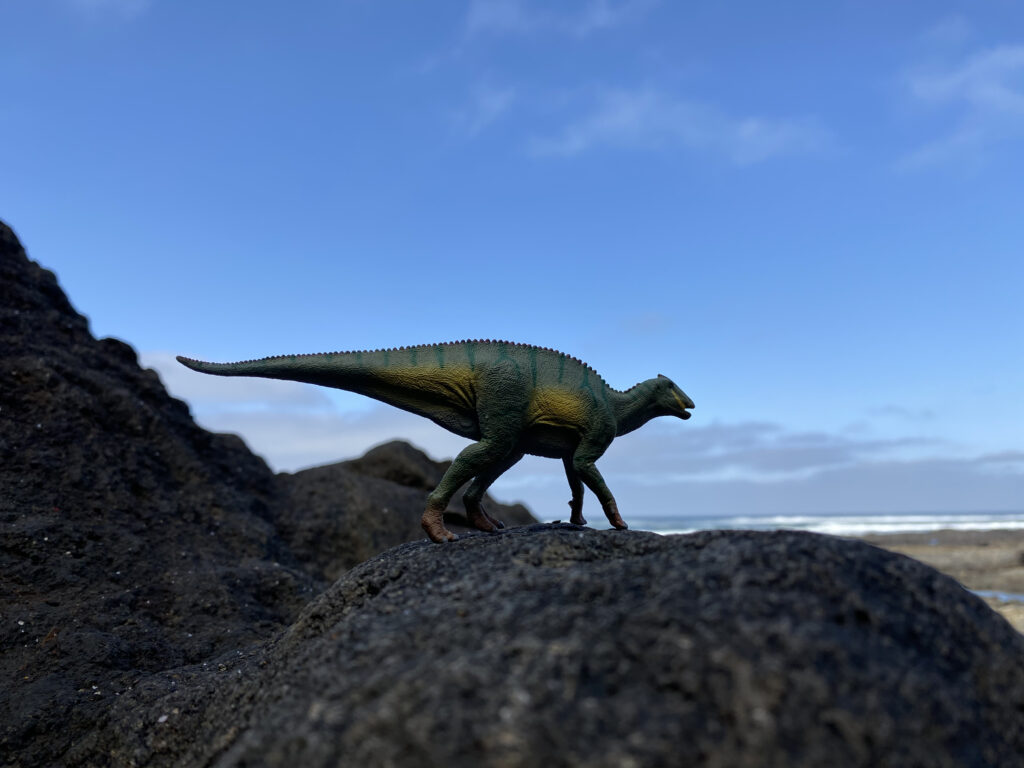
The base of the tail is also muscular as it should be and slowly thins out as it moves away from the body ending in a pointy tip.You can see clear muscle and tendon definitions up and down the powerful tail. Huge skin fold and veins can be seen along the side and under the tail that helps emphasize the power the tail has. We often see hadrosaur given skinny tail and base, so it’s great to see that this figure has none of that.
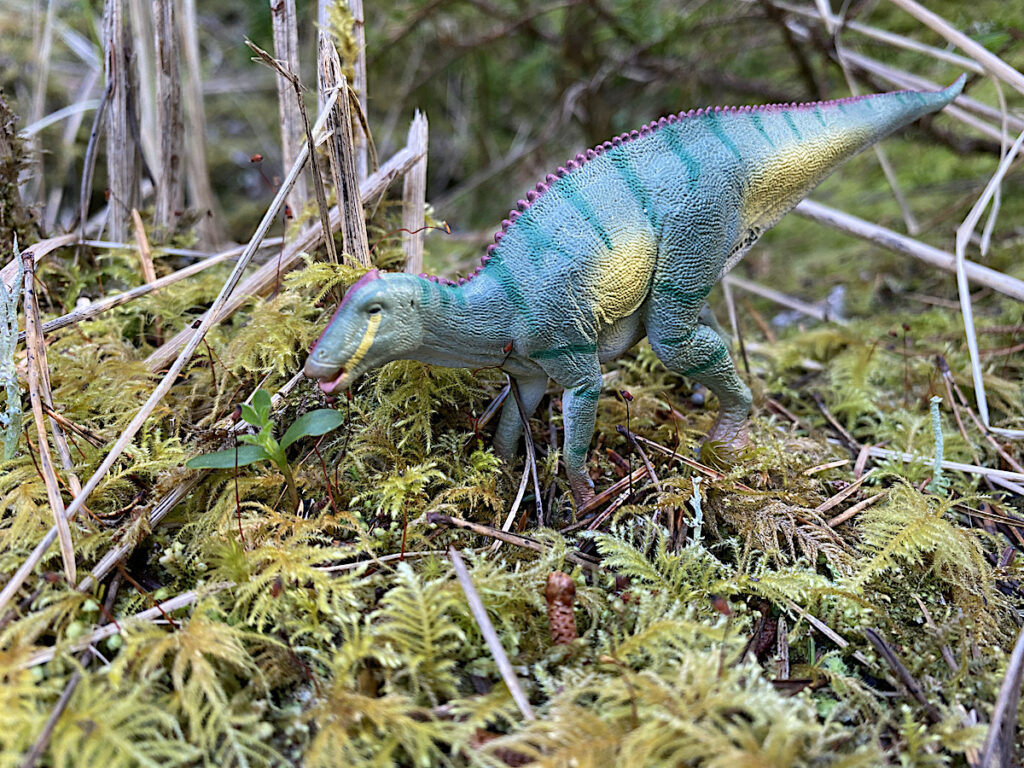
The overall color is dominated by a bluish green mix that covers the entire body. There are dark green stripes starting on the neck and runs all the way down the tail as well as the legs.On the stomach and base of the tail area is a splash of lemon-yellow patch that contrast nicely with the darker green base and brings a splash of colors. On promo photos, the green that covers the body looks more like Olive green, but in person it tends to be more on the bluer side.

In all the promotional photos I have seen, the yellow patches look bigger and brighter than they really are on the final product. In reality, these yellow patches are much more subdued and smaller which I think looks much better at this size and suits the figure very well. There is also a stripe of the same yellow hue on the face that runs from the base corner of the eyes and runs all the way to the corner of the mouth; it’s a striking simple design that hearkens back to CollectA’s tribal designs.
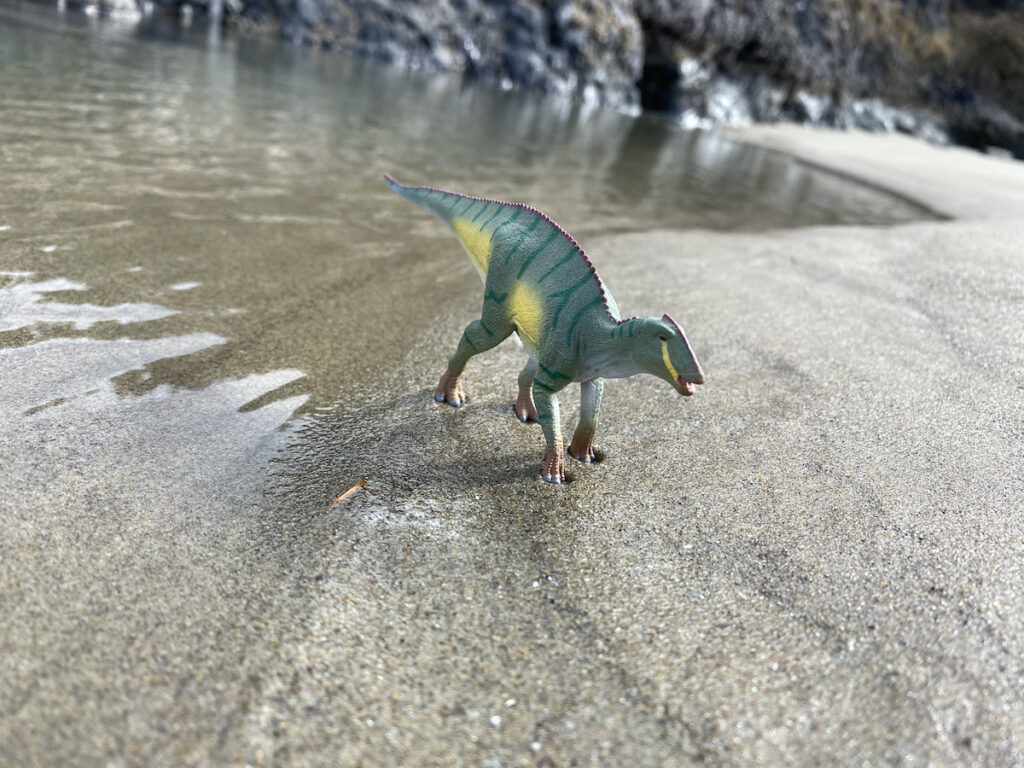
As as a testament to how wrong I was about doubting the colors; I was very surprised at how well the figure actually fits in a natural outdoor setting when I took it with me for some test shots to see how it would do. As a result, it traveled with me and I had a great time photographing it in various locations.
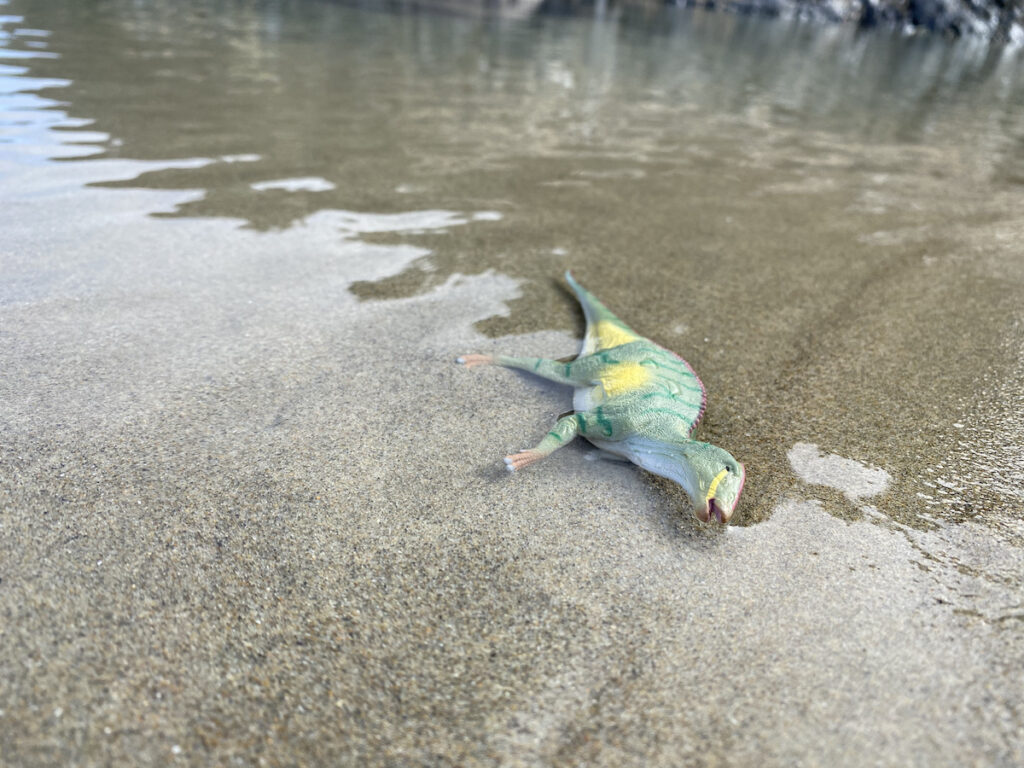
The fossil of Kamuysaurus was found in marine sediment so the animal must have lived in an environment close to shore and the body most likely washed out to sea after it died. Out at sea, scavengers did not have a chance to tear it apart before sinking to the bottom.This may explain why the majority of the bones are intact and well preserved. Hopefully more dinosaur fossil will be discovered from this Island nation that would shed more light on the unique and fascinating fauna assemblage of South East Asia.

My only one complaint ( if you can call it that) about this figure is that the brand stamp is located on the left side of the body just below the hip and tail base as well as the CE stamp on the inner leg and is very visible. This makes it hard to photograph the figure, especially in a natural setting, without seeing it. But this is understandable since the typical spot where we see the brand mark is so narrow and already has the made in China stamped on it, leaving only this area free, and CollectA tried to make it as unobtrusive as possible. As a result, it is not so visible from a distance.
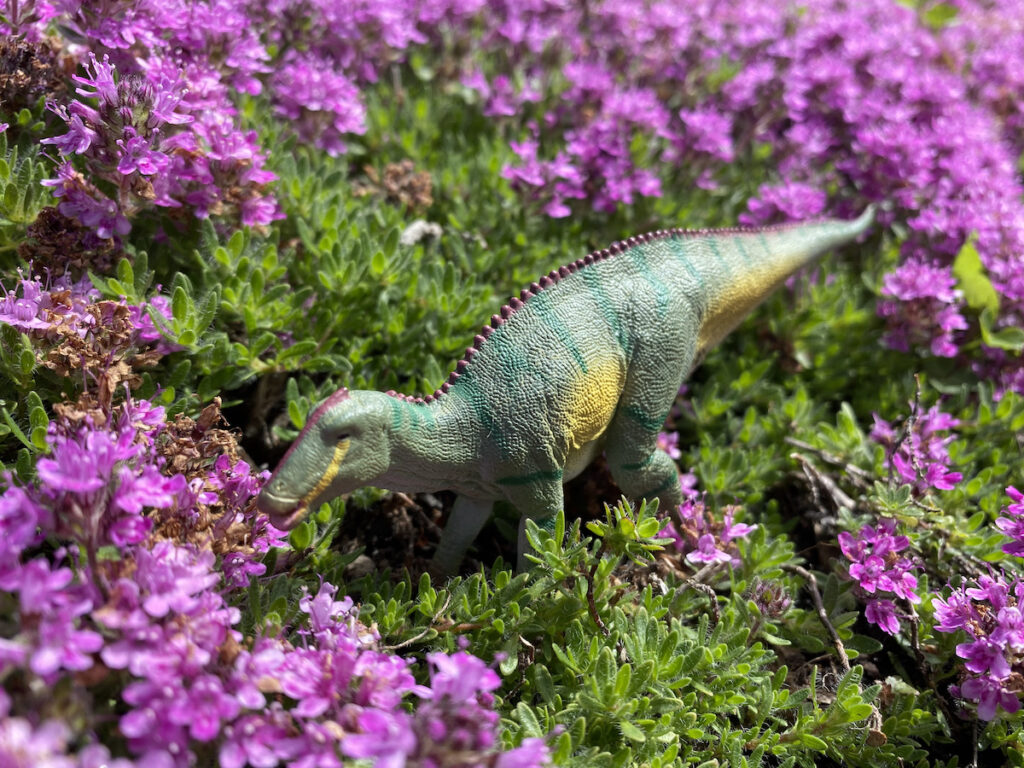
This figure is definitely a great one to add to any collection and much cheaper and easier to obtain than the Favorite version. It’s awesome that CollectA is continuing to produce beautiful and underrepresented and often obscure ornithopod figures and I hope that they would circle back and update some of their earlier hadrosaurs in the near future.Ornithopods in general are not best sellers especially the obscure ones, so it would be to our advantage to support such effort so that companies such as CollectA and others will be encouraged and continue to give us figures of this fascinating group of dinosaurs.

My sincere gratitude goes to CollectA for sending me this review sample! Hope you all enjoyed the review, thanks for reading. Until the next one, stay safe and healthy, cheers!
Support the Dinosaur Toy Blog by making dino-purchases through these links to Ebay and Amazon. Disclaimer: links to Ebay.com and Amazon.com on the The Dinosaur Toy Blog are often affiliate links, when you make purchases through these links we may make a commission

Hadrosaurs are my absolute favorite so I’m indebted to CollectA for producing not just ornithopods but a newly described genus for four years straight. *(five with 2022’s Edmontosaurus) Anticipating one day a Velafrons, Kritosaurus, Lurdusaurus, or Brachylophosaurus.
The best ornithopod in standard version made by Collecta. It is a miniature that will add to my collection in September-October of this year when the house in which I have commissioned said figure receives it. Magnificent and extensive review of said Bokisaurus figure as you always have us used to.
You know, I never cared for CollectA’s theropods, but their ornithischians are usually spectacular.
I adore this little fellow.
Great review! I can’t wait to get this little figure, I think it’s CollectA’s best smaller scale ornithopod so far, and I really like the color choices here.